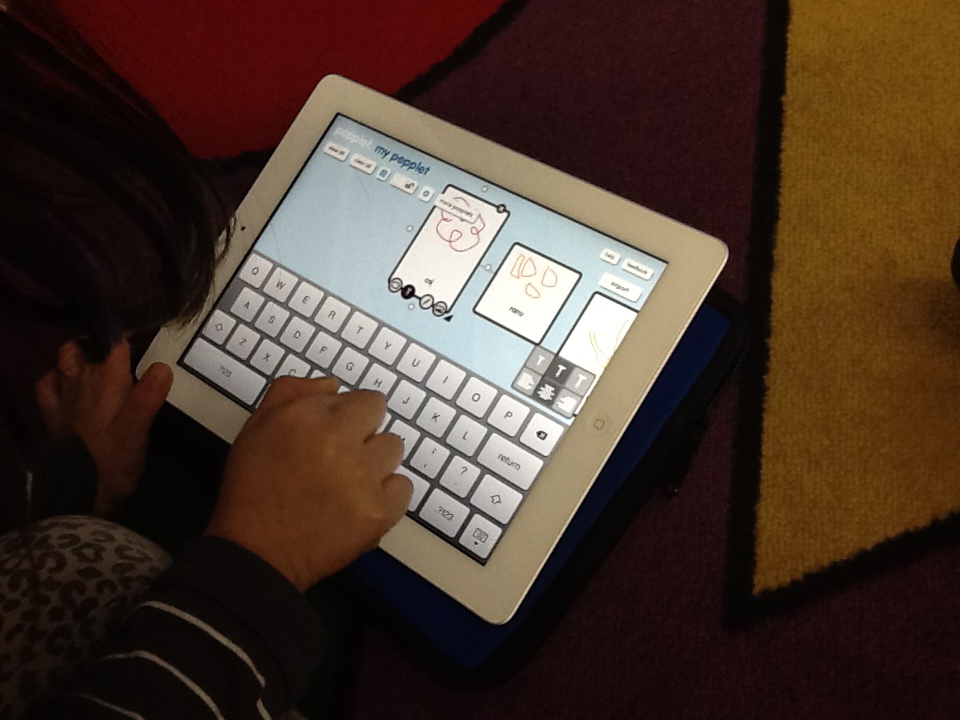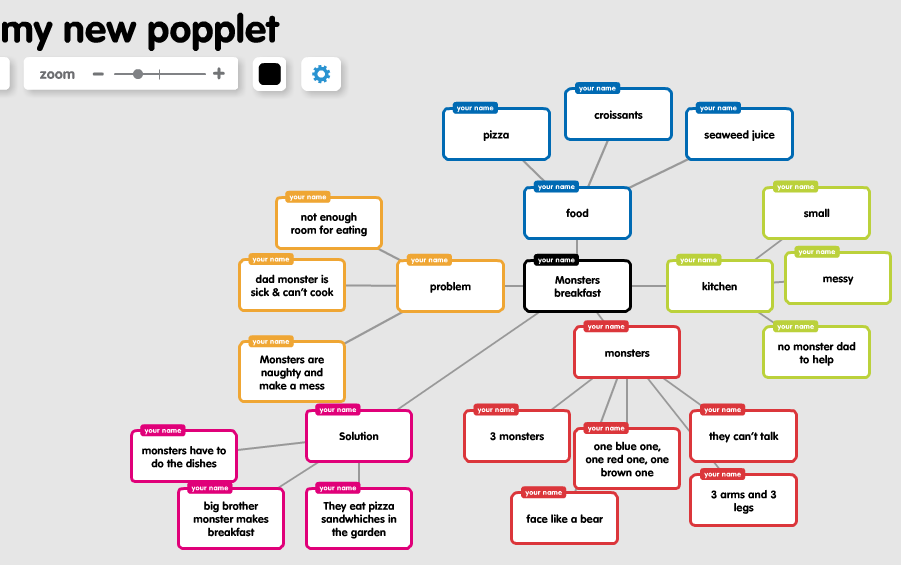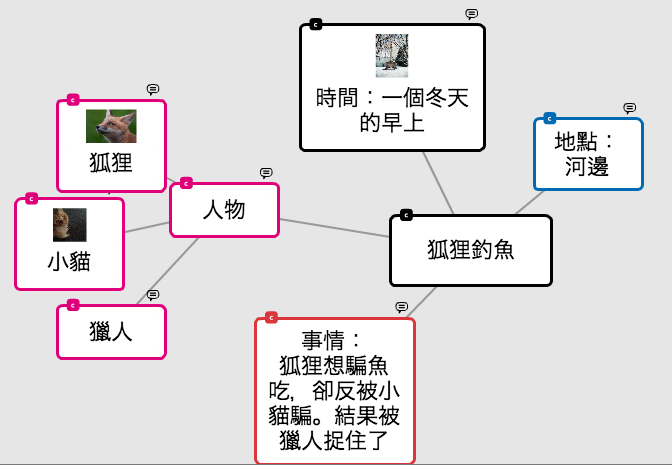Writing is more popular than ever! Sure, the infamous selfie and the spontaneous snap of a restaurant meal might be getting all the notice, but sharing our prose and poetry is more commonplace than ever before. The Facebook comment, the 140-character tweet, the Tumblr or WordPress blog, and many other platforms offer almost everyone who can write a potential audience numbering in the billions. Never before has so much been written by so many for so many.
In technology-assisted classrooms — and in the wider connected world — opportunities to write, to communicate, to develop, and to grow are now widespread. We took a look at how Popplet is being to put to good use by teachers of writing and how young scribes are shaping up in the digital world.
Fear of the blank page: Brainstorming with Popplet
Writing is the expression and communication of ideas and sometimes even the most gifted of young scribes can balk at the sight of the blank page. In the case of elementary students, they don’t so much “balk” as become quickly distracted, rapidly seeking more engaging stimuli in other areas. Educator Aylin Claahsen helps keep her ‘little friends’ on point in writing class by employing Popplet as a brainstorming tool in their guided writing activities.
Aylin usually has students in small groups for this Journal Writing activity, “but it can work in a full classroom”:
- First, Aylin meets with each student to set goals for the student’s writing, talks about what they have written so far, and what could be added to give the story more detail
- Aylin starts the writing time with a phonemic awareness activity as a warm-up exercise
- She reads a story based on the theme of the writing topic, after which she models “how to write in our journals”
- Students then use Popplet on their iPads to write one word and then draw a picture to match
- Finally, the students use their Popplets as a reference while writing in their journals…”making sure they include all their details”.

Aylin provides constant motivation and monitoring but tries hard not to interfere with the creative process of her potential Pulitzer winners, believing it best “to just let them write!”.
Aylin believes that this activity is “especially beneficial for struggling writers” as it allows them to visualize their goals and feel good about their progress. It can be adapted to a range of age groups and related writing activities including free writing and story-telling.
Getting Organized With Popplet
Apple Distinguished Educator, Kristin Meeuwse finds Popplet equally useful in the classroom as it enables her young pupils to “narrow their focus” when they are writing on their iPads, because like many of us today, young writers can suffer from information overload and “busy brains”. Popplet is good for decluttering the mind!
This Popplet was created by one of Kirstin´s students to help her organize her thoughts on writing about the rainforest:
It was then saved to her camera roll and imported into Pages so she could begin writing on her iPad. Here is the first page of her writing:
A new page can now be added for each of the animals. The Popplet is also a powerful visual reminder as a reference for what the student may want to write about in future exercises.
Each child gets to choose which document creation app they will use: Book Creator, Pic Collage or Pages. Images are sourced on Safari and saved to camera rolls. Students are even allowed to choose paper over Popplet for organizing their thoughts! Kristin believes “this choice is integral to the activity because: students are very engaged and excited to share what they have learned”, the finished products are reflective of their creative energies and knowledge gained, and they produce “far superior” work than they would had they been “dictated to”.
Once upon a time… Storybuilding with Popplet
Ed Tech educator and author of The Tech-Know Parent blog, Jo Blannin believes it’s important that children “know how to write clearly and accurately”. Frequently hearing students say “I don’t know what to write”, Jo has found that mind mapping apps like Popplet help students uncover deep wells of potential.
Focusing on younger learners – Grade 3 and below – Jo provides this example of a story plan created by a student:
We agree with Jo: “it really is great”. Story structure (introduction, problem, solution) and other details: characters, settings and situations are all clearly visualized by coloring and by connecting popples.
“This child went on to write a great story they didn’t know they could produce.”
Great stuff!
Planning with Popplet
Claudia Lee, who is multilingual and passionate about ICT integration believes “students often struggle with writing because instructional time devoted to teaching the process (brainstorming, planning, drafting and revising) of writing is limited.” Sound familiar? Ms Lee had her students brainstorm ideas on the Chinese New Year Holiday. One student created this Popplet:
The student was then able to complete their writing task by referring to the Popplet:
Ideas are easily planned and structured using Popplet, adding colors to show different lines of thinking. Ms Lee “feels sure” Popplet could also be put to good use in Chinese writing lessons (perhaps the subject of a future blog post?!)
How are you enjoying Popplet in your writing classes? Share your experiences with us, and our community on Twitter and on our Facebook page.





